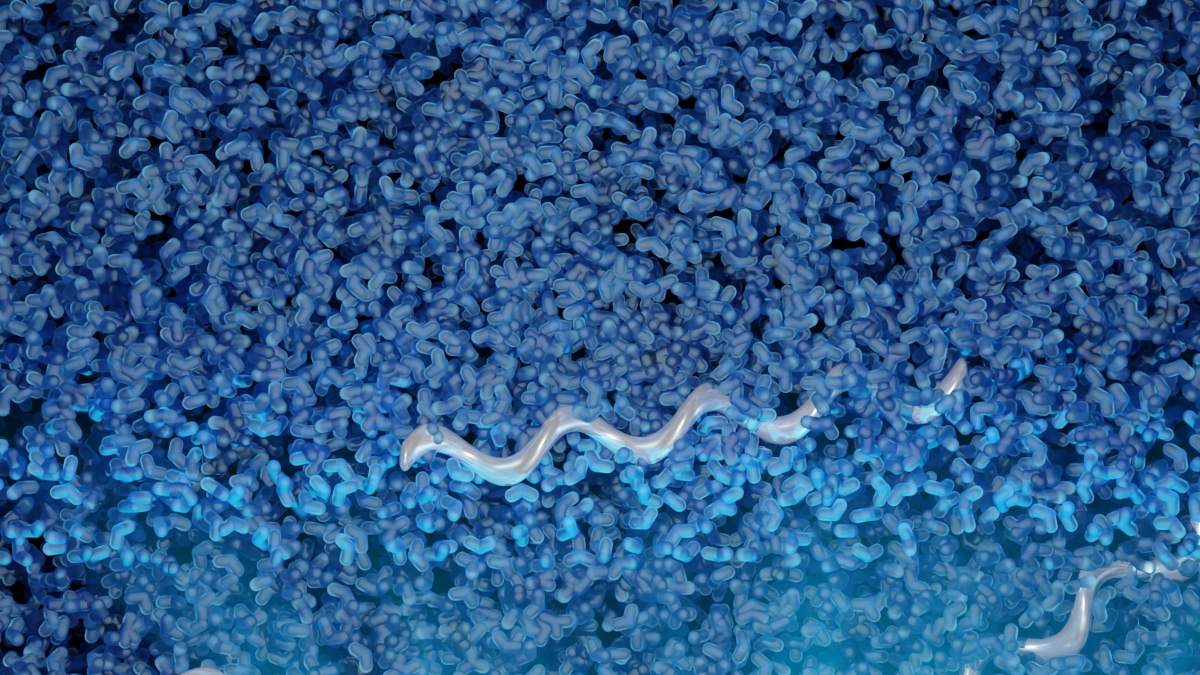ASU researchers pioneer technique to study Brownian motion at micro scale

A group of biophysicists at Arizona State University developed a new, innovative way to study the fundamental properties of the propellers that microscopic organisms use to move. Photo courtesy Alexy Chizhik
A group of biophysicists at Arizona State University developed a new, innovative way to study the fundamental properties of the propellers that microscopic organisms use to move.
Peter Brown, Franky Djuanta, Rizal Fajar Hariadi and Douglas Shepherd with the Center for Biological Physics and Department of Physics in The College of Liberal Arts and Sciences pioneered a new approach to studying individual flagella, helical propeller structures used by microscopic organisms, such as bacteria, to move through the natural world.
Analyzing how the helical propeller works “is vital to understanding both the swimming behavior of single cells and collective dynamics of many cells,” according to the paper’s introduction.
Despite decades of research on swimming bacteria, the hydrodynamic properties of their flagellar propellers have never been directly measured. This study marks the first direct characterization of these properties, addressing the challenges posed by the propellers' small size and fast motion.
Djutanta, Brown and their team at ASU developed a way to overcome those challenges by combining high-speed 3D fluorescence microscopy from their lab, computer vision and theoretical physics.
Relying on their recent advancement in microscopy, the team isolated flagella from Escherichia coli (E. coli) and rendered them fluorescent when illuminated by laser light. They could then analyze and track each individual flagellum's random thermal motion. The data generated by the cutting-edge microscopy techniques allowed the team to determine the propeller’s efficiency from the random motion, taking advantage of insights that Albert Einstein first developed while considering Brownian motion experiments in 1905.
The team’s new approach to studying correlated Brownian motion and propulsion efficiency has the potential to advance the field by enabling researchers to measure actual biological propellers, improving on prior approaches that instead measured millimeter-scale macroscopic wire models.
“This paper presents a new way of doing experiments such that we can visualize the propeller. Then, importantly, it puts it on a broader mathematical and physics framework such that we extract meaningful information from the measurements,” said Shepherd, assistant professor at the Center for Biological Physics and Department of Physics.
“This started from wanting to understand the Brownian movement, which is how thermal energy influences smaller objects,” said Fajar Hariadi, an assistant professor at the Center for Biological Physics and Department of Physics.
Despite the breakthrough this research has uncovered, some questions still need to be answered.
“There’s a lot to be excited about regarding this research. Many scientists use E. coli for all kinds of experiments, so it’s exciting to learn about or measure something in a new way,” Brown said.
The team plans to continue studying propellers from other microscopic organisms and investigate unresolved questions about E. coli flagella.
More Science and technology

ASU-led space telescope is ready to fly
The Star Planet Activity Research CubeSat, or SPARCS, a small space telescope that will monitor the flares and sunspot activity…

ASU at the heart of the state's revitalized microelectronics industry
A stronger local economy, more reliable technology, and a future where our computers and devices do the impossible: that’s the…

Breakthrough copper alloy achieves unprecedented high-temperature performance
A team of researchers from Arizona State University, the U.S. Army Research Laboratory, Lehigh University and Louisiana State…

